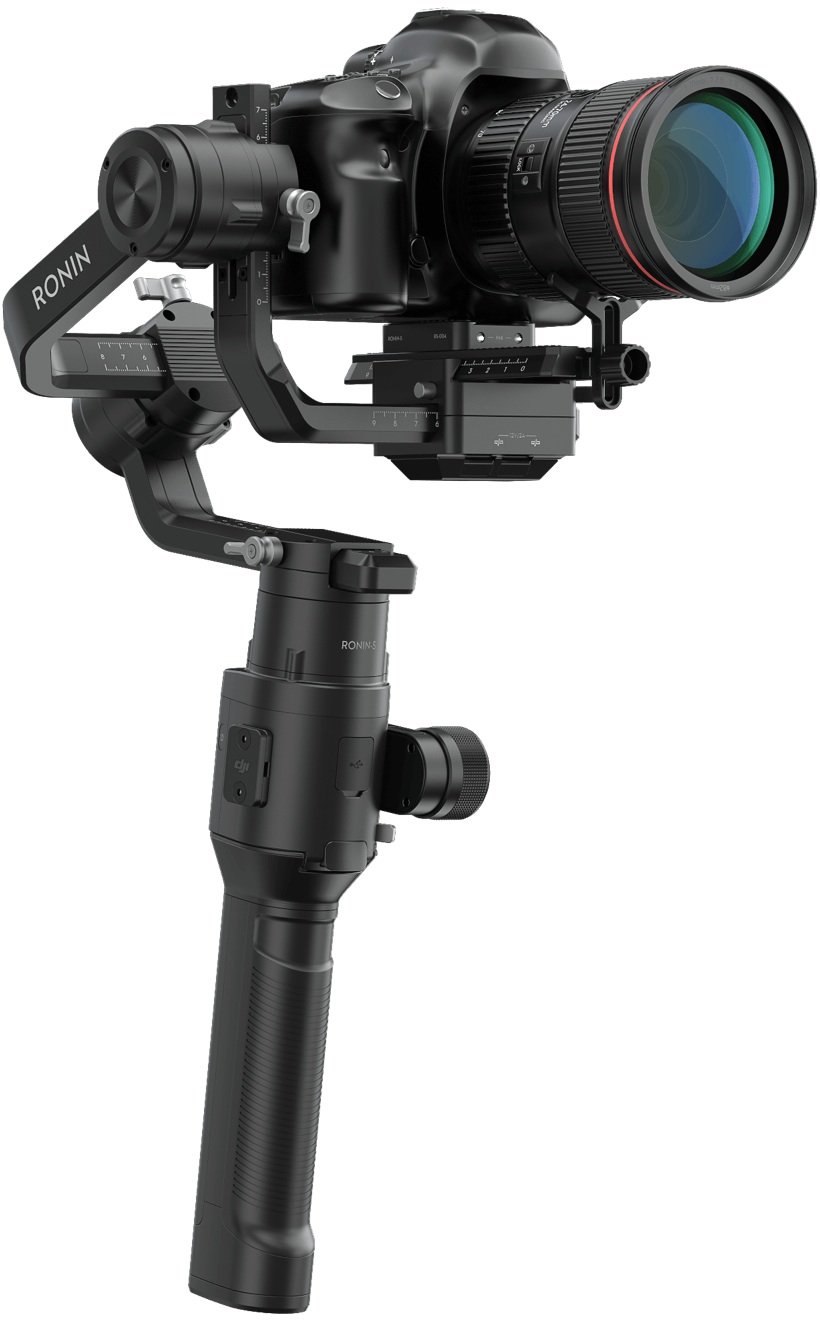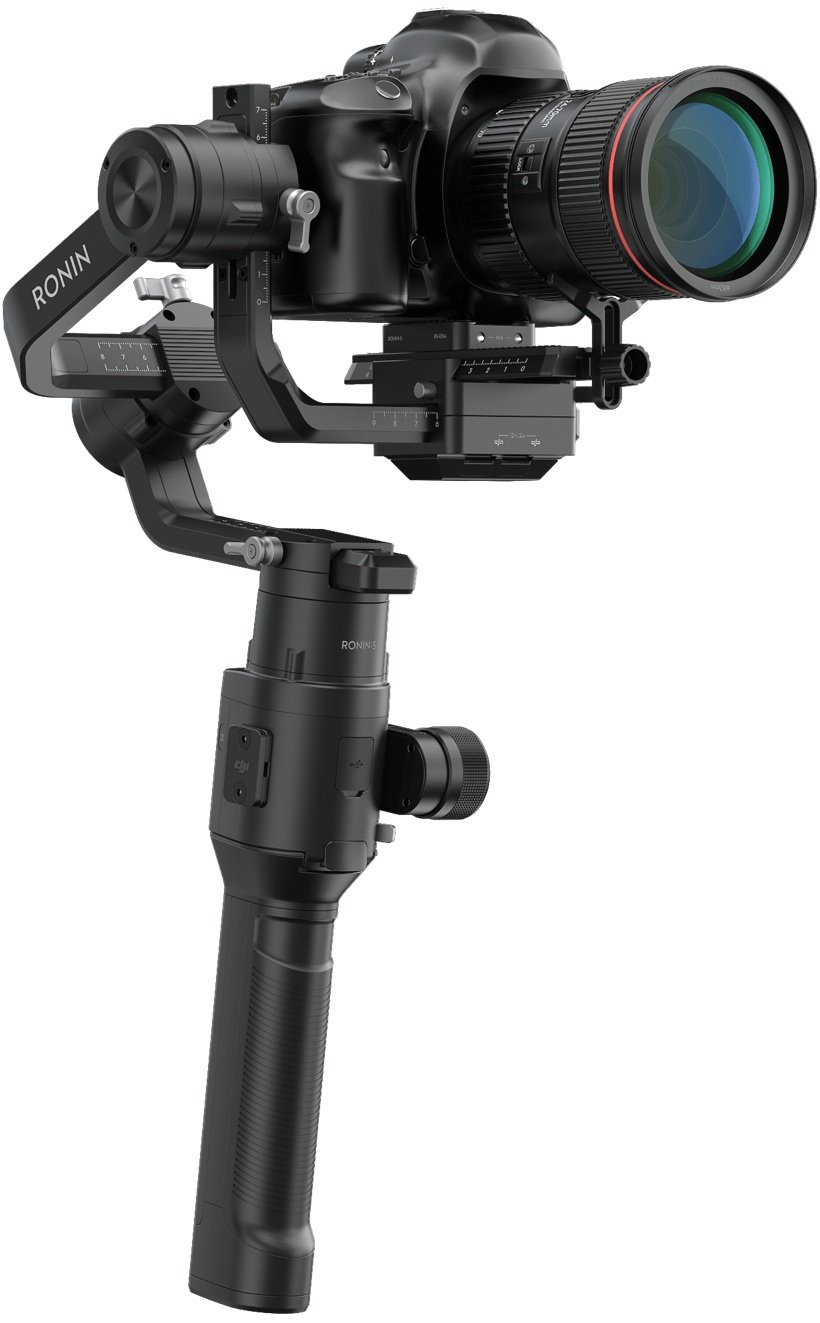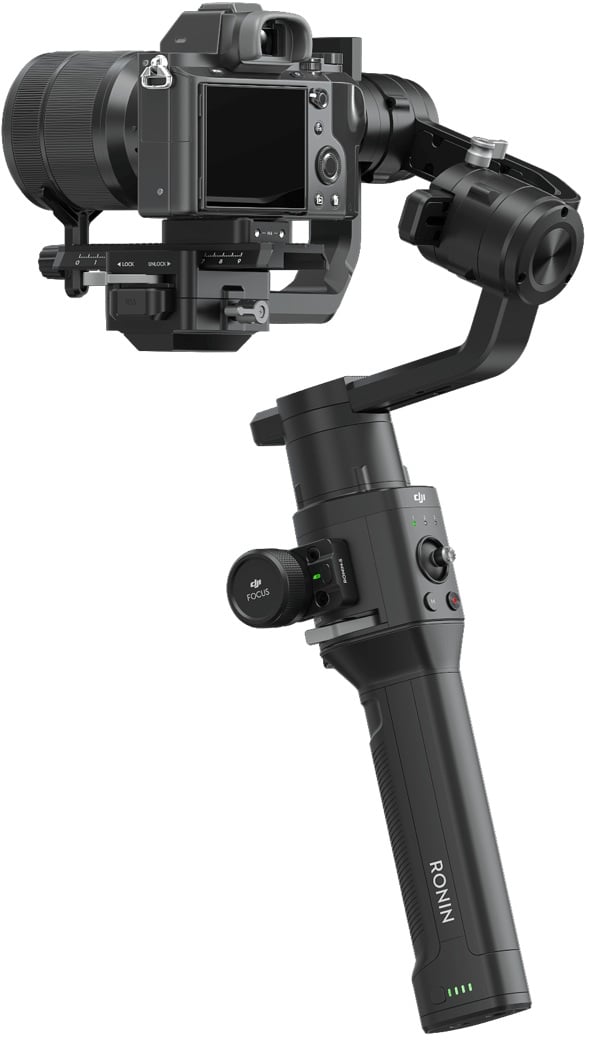DJI Ronin-S Standard: Professional Stabilization ina One-Handed Gimbal

The DJI Ronin-S gimbal is a stabilizer that’s a one-handed addition to bigger, more expensive Ronin gimbals. The Ronin-S is engineered to balance and stabilize smaller, lighter video cameras, such as DSLRs and still lighter mirrorless models.

For many users it’s probably not a full-time alternative to the two-handed Ronin-Stabilizers, such as the Ronin-M and MX, or the MoVi 10 or MoVi 5. But you can add the switch grip dual handle to your Ronin-S for a steadier grip. For filmmakers trying for a tough-to-get angle or shots in tight spaces, the compact Ronin-S works. It’s also suited to stabilizing B-roll video.
The Ronin-S is a great a place to start for filmmakers on a budget. And it certainly qualifies as an able accessory for an advanced amateur who wants to stabilize the video shot on a DSLR or mirrorless camera.
Substantial but Smaller Gimbal
The gimbal I used was part of a Ronin-S Standard Kit Refurbished. Don’t confuse the Standard Kit with the Ronin-S Essentials Kit, which includes less equipment. A DJI Standard Kit Refurbished sells for the same $389 price as an Essentials Kit that’s brand new. (DJI Refurbished carries a one-year warranty and comes with the usual Drone Nerds return policy, which allows exchange for another refurbished product or a Drone Nerds 10-day exchange, no-questions-asked, for a restocking fee.)
This foldable pistol-grip gimbal is sturdy and substantial. It is, however, more compact than the Ronin MX3 and the Ronin-M, which can handle medium-format cameras used on movie sets. So, while your Canon 7D and Sony A7 will fit on the bigger Ronin-M series gimbals, your Red camera/lens will overburden the Ronin-S. Smaller, lighter and lower-priced than the S is the Ronin-SC, designed for mirrorless cameras only.
The Ronin-M series, which like MoVi 10 and 5 allows attachment of a ring for all-sides gripping and easier passing among operators, is popular with filmmakers producing commercials, documentaries, promotions, sophisticated Web video, shorts and similar projects. It’s less likely to be found in the hands of a wedding photographer, who is more likely to use the Ronin-S or similar pistol-style Zhiyun Crane.

Using the Ronin-S
Mounting was straight forward and secure, with quick release when needed. On some camera-lens combinations, counterweights may be needed. Ronin-S can handle up to 8 pounds of camera and lens.
With a Sony A7RII and a Sony 28-135mm lens mounted, I could easily manage most needs one-handed. Although the 4-pound Ronin-S is heavier than the Crane, using it wasn’t fatiguing until well into a day’s shooting. If I needed two-handed support—for an overhead or ground-level angle—I could attach the Standard Kit’s mini tripod and keep it folded. It functioned as a long handle extension.
Most camera functions could be controlled by my right hand on the grip. Facing me were a joystick for camera direction, the “M” button for program selections, and start/stop. On the opposite face was a multi-function trigger. A focus wheel, part of the Standard Kit (but not the Essential) was mounted to the left of the handle and required using my left hand.
A significant adjustment the Ronin-S let me make was gimbal sensitivity. Default settings were, for me and for the light camera I was using, too sensitive—a problem, but not for long. I was able to slow the gimbal’s sensitivity to my liking. It took trial and error, but I could save the settings.
Among the other controls I could set from the handle were a balance test after mounting a camera or changing lenses, re-centering, continuous auto focus (excellent on the Sony) and recalibrating the joystick if the gimbal wandered.
Ronin-S did more than stabilize video. It also recognized the position of the camera on the gimbal and maintained it as the gimbal moved. When I attempted a ground-level shot, the camera remained properly oriented. As I swung the camera upwards in an arc, the camera remained in perfect position, with camera movement appearing fluid and natural in the video.
ActiveTrack has been available since a firmware update a while back—and it works.
Because the camera mounts above the roll-axis motor, I could see the A7’s tilting rear screen without interference from the gimbal itself. An adjustable mount for a separate monitor is available.
The Ronin-S is an affordable, effective tool for professionals, and even for semi-professionals vlogging Youtube product reviews and lifestyle footage. Importantly, the Ronin-S is highly customizable with readily available accessories to meet individual needs.
